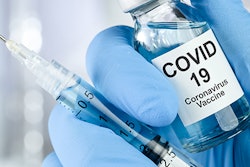Seven years after publishing a proposal, the U.S. Food and Drug Administration (FDA) has issued its final order reclassifying computer-assisted detection (CADe) and computer-assisted diagnosis (CADx) algorithms used in radiology from class III to the less stringent class II (special controls) category.
In a rule published June 13, the FDA identified the generic type of device, “radiological computer-assisted detection and diagnosis software,” as "an image processing device intended to aid in the detection, localization, and characterization of fracture, lesions, or other disease-specific findings on acquired medical images (e.g., radiography, magnetic resonance, computed tomography)."
Analysis provided is intended to inform primary diagnostic and patient management decisions and is not intended as a replacement for a complete clinician's review or their clinical judgement, according to the rule. The FDA also identified special controls that apply, such as design verification and validation requirements, and labeling requirements.
The FDA regulates medical devices based on their risk to patients and their intended use, using three classifications:
- Class I for low-risk devices, such as medical gloves
- Class II for more complex devices, such as CT and MRI scanners and other radiology systems
- Class III for the highest-risk products
FDA proposed the reclassification in May 2018, stating that all class III medical image analysis products should be reclassified into class II "on the basis that special controls, in addition to general controls, can be established to provide reasonable assurance of the safety and effectiveness of the device."
Effective June 13, the final order is an amendment to the Code of Regulations and also reinforces mitigating the risks of false positives, false negatives, device misuse, and device failure leading to absence of results, delay of results, or incorrect results, leading to delayed or inaccurate patient diagnosis, according to the FDA.
"We are taking this action because we have determined that classifying the device into class II (special controls) will provide a reasonable assurance of safety and effectiveness of the device," the FDA noted in the rule. "We believe this action will also enhance patients’ access to beneficial innovative devices, in part by reducing regulatory burdens."
The FDA also highlighted the advantages of its De Novo classification process for bringing these types of devices to market.
"When FDA classifies a device into class I or II via the De Novo process, the device can serve as a predicate for future devices of that type, including for 510(k)s (see section 513(f)(2)(B)(i) of the FD&C Act)," the FDA wrote. "As a result, other device sponsors do not have to submit a De Novo request or premarket approval application to market a substantially equivalent device (see section 513(i) of the FD&C Act, defining “substantial equivalence”). Instead, sponsors can use the less burdensome 510(k) process, when necessary, to market their device."
Find full details of the final amendment, final order in the June 13 edition of the Federal Register.




















